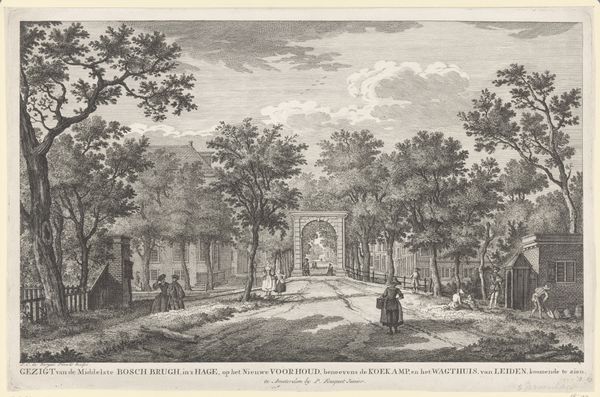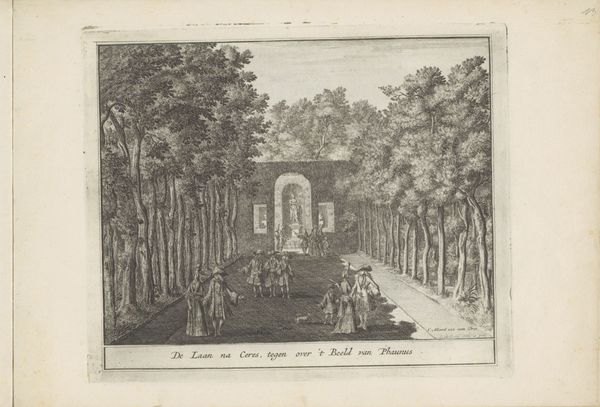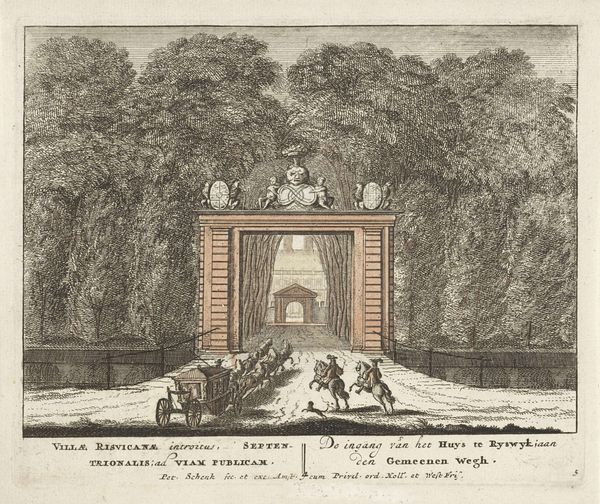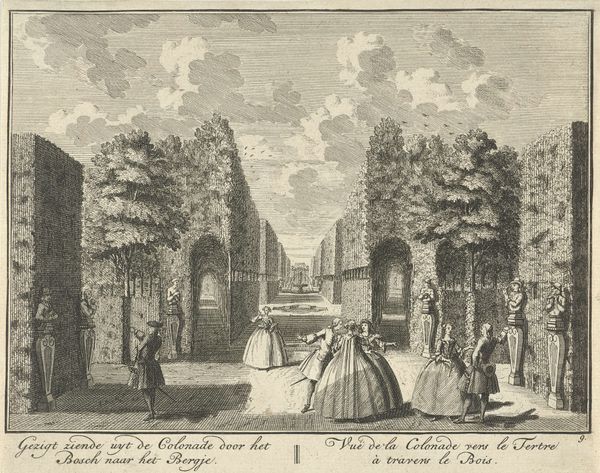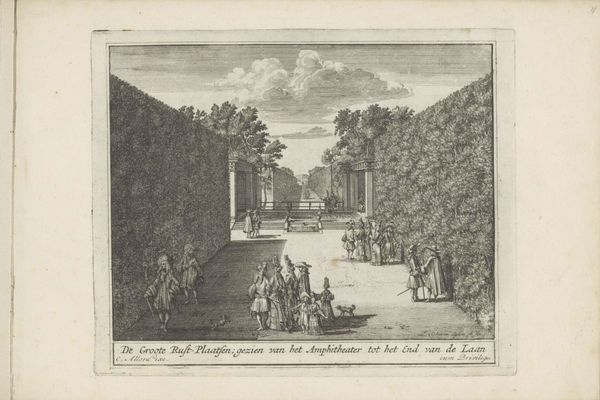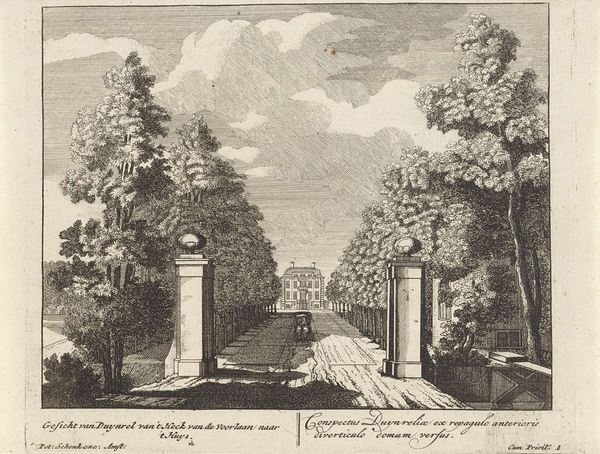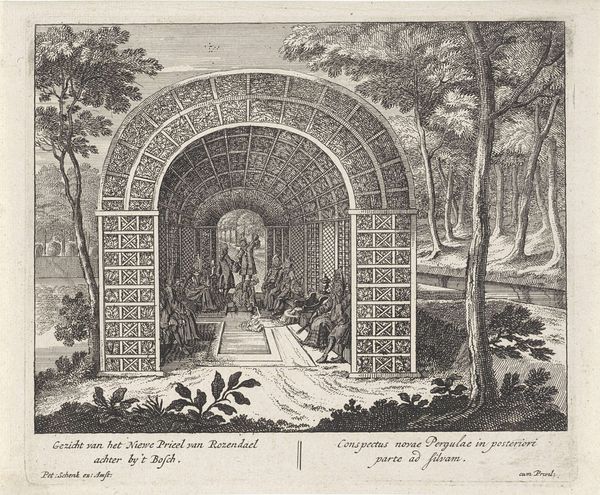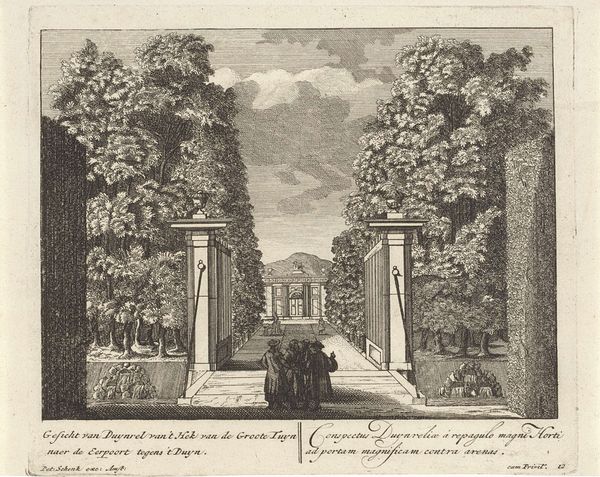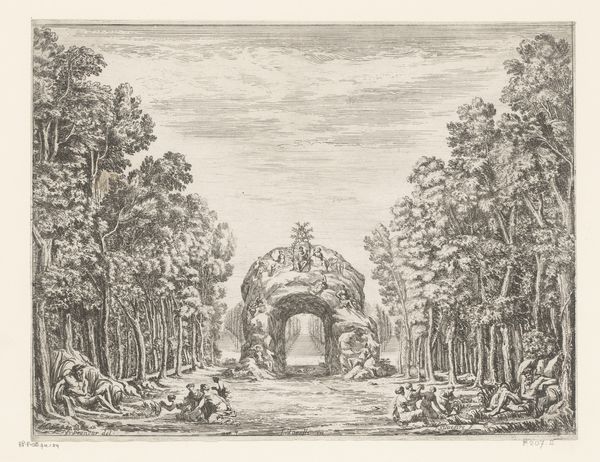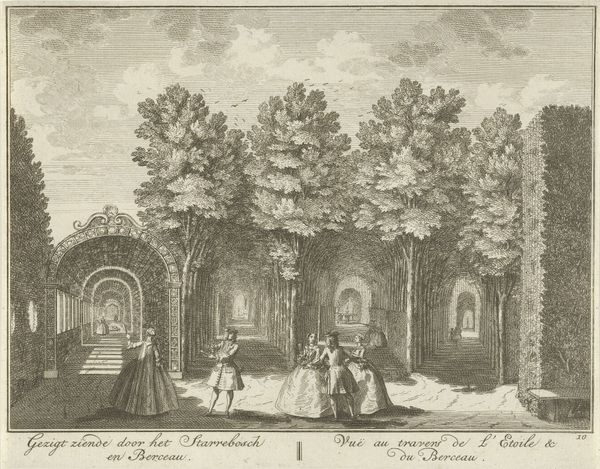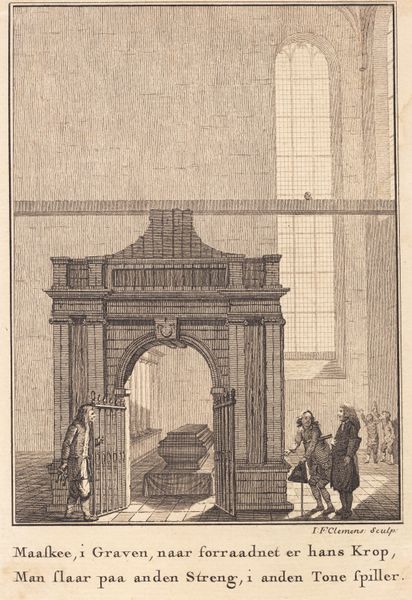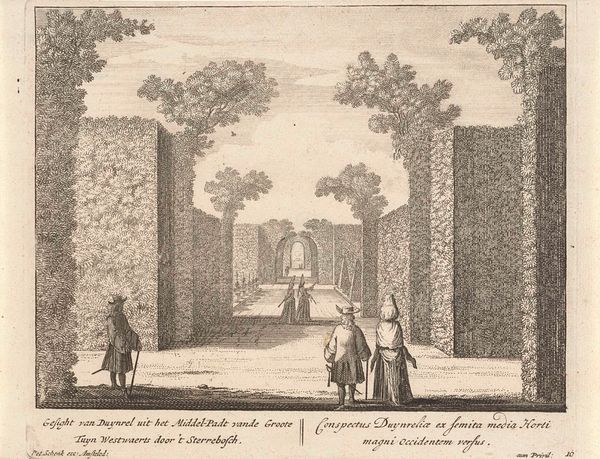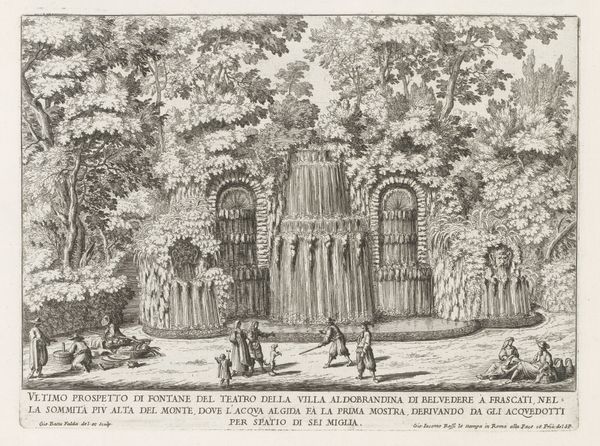
Eerste poort van de grote laan op landgoed Clingendael Possibly 1682 - 1746
0:00
0:00
print, engraving
#
baroque
# print
#
landscape
#
cityscape
#
engraving
Dimensions: height 128 mm, width 166 mm
Copyright: Rijks Museum: Open Domain
Editor: This is "Eerste poort van de groote laan op landgoed Clingendael," an engraving by Daniël Stopendaal, likely from between 1682 and 1746. It depicts a grand gateway in a park. I find the perspective very striking; it almost draws you right into the scene. What can you tell me about it? Curator: This engraving is fascinating because it captures a specific vision of Dutch identity through landscape and the constructed environment. These formal gardens and imposing gateways, meticulously rendered, signal the control and order favored by the Dutch elite. This isn’t just about portraying nature; it’s about shaping and displaying it in a way that reinforces social hierarchy and political power. How do you think this image would function for its original audience? Editor: I suppose it would be a status symbol, a way to flaunt their wealth and refinement. Is there any symbolism we can identify in the depiction? Curator: Precisely. The architecture, inspired by Baroque ideals, hints at aspiration towards the international cultural scene while grounding it within a distinctly Dutch context. The presence of figures leisurely passing through also hints at a cultivated life. We might ask ourselves, who was this image for? Who had access to Clingendael and representations of it? Editor: It is a subtle but effective form of propaganda. So this print circulated to a specific audience and served specific political aims through its visual depiction. Curator: Exactly. By examining this image, we uncover how landscape becomes a stage for power, designed for both display and social influence. Consider how such idealized imagery played a part in shaping public perception. Editor: I never thought of landscapes being that political before. It has been really illuminating, thank you!
Comments
No comments
Be the first to comment and join the conversation on the ultimate creative platform.
